Should I turn my 29er into a mullet bike? – Five pros and cons of bunging a little wheel into your 29er

The wheel size debate perhaps the longest, most heated argument in mountain biking to date. Then in come mullet bikes to confuse things even further with the promise of the best of both worlds. Though, that begs the question, how would a purpose-built 29er ride with a 650b wheel in the back? Here are five pros and five cons of putting a little wheel in the back of your 29er.
- Five things that weren't cool - until enduro happened
- The best trail and enduro mountain bike wheelsets, tried and tested
- The ultimate guide to frame materials: what's best for bikes?
What is a mullet bike?
For the uninitiated, a mullet bike is a mountain bike with a 29” front wheel and a 650b rear wheel. The name comes from the phrase, “business up front, party out back”, which is also associated with the infamous mullet haircut.
Mullet bikes aren’t necessarily anything new though. Back in 2002 Specialized released the Big Hit, which came with a 26” wheel at the front and a 24” wheel at the rear. It received mixed reviews but mostly over its hefty weight and the limited selection of 24” mountain bike tyres back then. After that, the idea faded away until recently.
These days, brands such as Canyon and Vitus have adopted the set up on their e-bikes to add a bit of playfulness and to counteract the extra weight of the battery and motor. There has also been a couple of acoustic mullet bikes such as the 2020 Specialized Status and 2020 Intense Primer S Pro (which has dropped the mullet set up for 2021). But with limited options in the mountain bike market what happens to the ride of your 29er if you put a smaller wheel in the back?
The good things
You get a slacker geometry
We’ll start with the obvious one here, the geometry changes. It's subtle but on most bikes, the head angle and seat tube angle will slacken by a degree or so and the bottom bracket will drop. On my Mondraker Foxy, the head angle was a degree slacker and the bottom bracket dropped by 5mm. This may change more or less depending on the bike, and the width of tyres you'll install too.
On the trails, the geometry shift translated into a ride that I felt was more confident on steep sections. Because of the slacker head angle and more composed characteristic, the bike felt quicker.
That drop in BB height lowers the centre of gravity which makes for confident cornering. It definitely feels quicker when railing berms.
Business up front, party out back is a real thing
It’s clear that the bike benefits from the greater rollover of the big wheel and the playful characteristic of the 650b at the rear. The rear end feels rowdier while the front wheel gets to work as a 29er hoop usually would, smoothing bumps and adding traction at the front end.
The snappier characteristic of the small wheel helps in tight and twisty sections too, it's quicker to turn and pump.
You'll buzz your bum less
If you often find yourself hitting steep chutes and rolls I bet you’ve suffered a bit of bum buzz on your 29er. The effects of this can range from a minor inconvenience to being pitched forwards and in the very worst case, you might even lose your shorts.
Simply because of the 650b wheel’s smaller size, this happens far less frequently as it gives you a surprising amount of space to move over the back of the bike. Paired with the newly slackened geometry, this just makes steep sections more comfortable.
The bike will accelerate faster
Another little wheel trait that’s translated straight over to the homemade mullet bike is its inherent acceleration. Your bike will feel easier to pump, probably a very good reason for mulleting e-bikes with more mass to move and more pumping effor required. This is super welcome, especially if you're trying for a Strava KOM.
You get a stronger and stiffer rear wheel
Of course, this point is marginal. I've wrecked both 29" and 650b wheels but the shorter spokes offer a wheel that's both stronger and stiffer. This is great if you abuse the rear wheel.
The not so good things
The front end feels higher
The small rear wheel drops the height of the rear end and as a result, the front end feels higher. You might need to make some bar height adjustments to counter this. There is a diverse characteristic between the cornering nature of a 29er and a 650B wheels. You'll need to muscle the front end into a corner while the rear feels as if it's already leaned in before I've even thought about it. Once mastered, it results in a bike that is easier to lean into corners we reckon.
The bike isn't as well balanced
While the front end is as composed as a 29er usually is, if not, even more so thanks to the newly slackened head angle and that big wheel up front. The rear however can feel like it 'hangs up' on bumps in comparison, giving your legs a harder time than in you had a 29er/29er set up.
It could be seen as 650b's playful nature but it's very clear that the rear is finding all of the square edges, whereas a 29er rear wheel would potentially rollover that chunder. Instead, the rear is noticeably chattery, while the front end isn't.
You get a slacker geometry pt.2
Oh yes, it's this point again. While generally, a slacker geometry is great, it's not without its caveats.
On climbs and flat ground, the front end is definitely more wandery thanks to that slacker head angle. You'll create a slacker seat tube too which will put more of your weight over the rear, something you'll notice that as you're trying to get your weight forwards when the trail points up.
It's an expensive endeavor
There's a considerable investment that comes with the homemade mullet bike, unless you already have the bits lying about or have an equally as curious, 650b riding mate, of course.
It goes without saying but you'll need to get a hold of a new wheel and tyre. With that, you're looking at spending at the very least £150 for brand new kit. So if you don't already have the parts, it's not really something that's easily accessible if you're just looking to see how it rides for yourself.
If you are willing to commit, all you'll need is that wheel and tyre. If you get hold of a wheel that's compatible with the cassette and brake rotor of your 29" wheel, it's easy to swap them over but you'll also have to make sure that your hub spacings match.
Business up front, party out back isn't necessarily a good thing
I'm pretty much rounding up everything I've said here, but while you do get the benefit of each wheel size, you also get the disadvantages such as altered geometry and angles and some diverse rolling characteristics.
Let us know about your experiences in the comments below....
Who is the homemade mullet bike for?
You might be disappointed to find that just like the 29" vs 650b wheel size debate, there's no clear-cut answer.
Personally, I prefer the consistency of a single-size set up. The rear wheel is much more likely to behave similarly to the front and there's a lot to be said for that in terms of confidence. Although, that's not to say that the homemade mullet bike doesn't have a use though. A shining example is if your frame doesn't have a flip-chip equipped and you're looking to change your geometry according to where you're riding that day.
If one venue is steep and twisty, it's super easy just to whack a little wheel in. If the next spot is super techy and you want a smoother, more predictable ride then it doesn't take an awful lot of effort to switch wheels. Our Editor Rach prefers a mullet set up for this reason, currently riding both an e-bike and an acoustic mullet bike.
There's no hiding that the little wheel at the back is more playful. If you're looking to liven up your 29er's ride, it'll definitely do the job.
However, I found the real benefit of the little rear wheel is how it slackened my head angle. It calmed down the ride of rough sections and made life that bit easier on steep trails. Therefore I think my money would be better spent on an angle-adjusting headset, that way I don't suffer the disadvantages of two-wheel sizes.










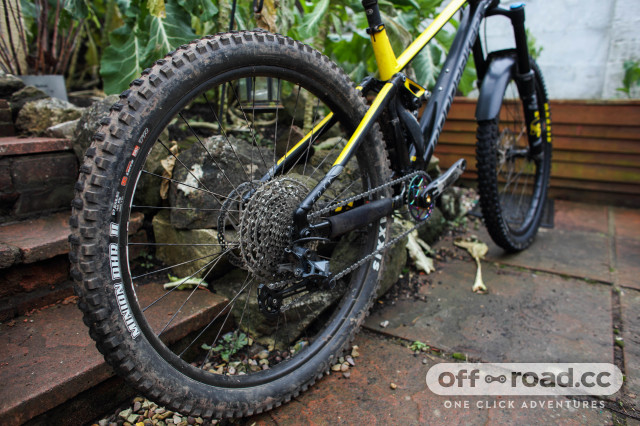

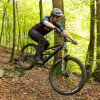
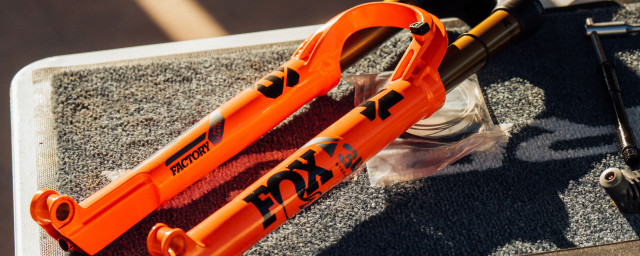
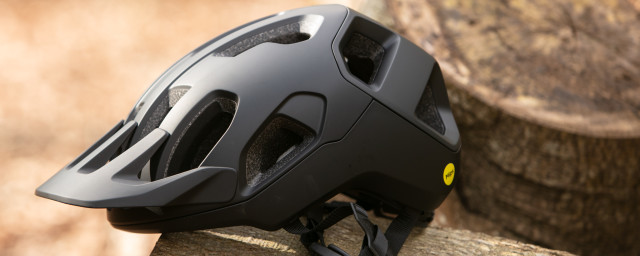
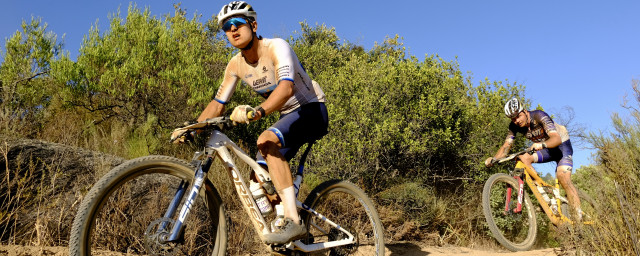
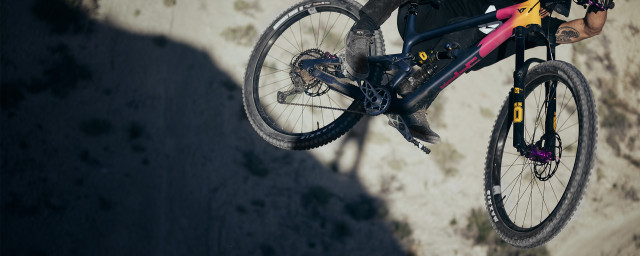
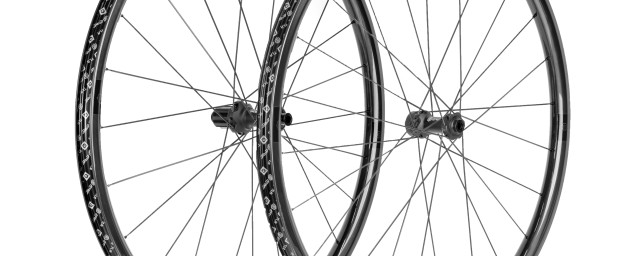
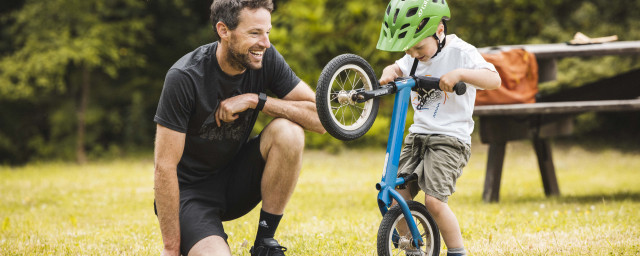
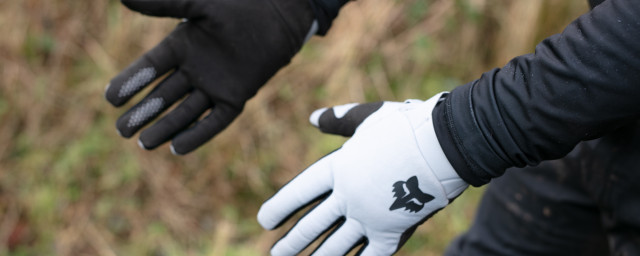
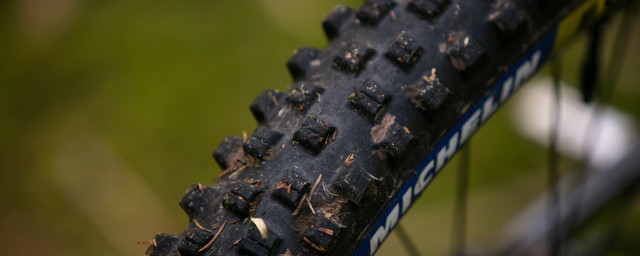
1 comments
I thought the whole nonsense of the smaller rear wheel accelerating better was shown to be rubbish back in the days of the Trek 69er. You can't accelerate the wheels independantly. You still have to move the 29' wheel up the front the same distance.